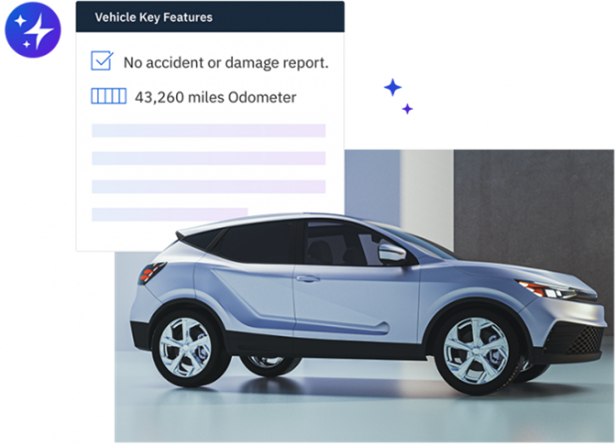Transparency in Sales: How To Build Trust from the Start

Article Highlights:
- How to break through barriers with guarded customers.
- A smooth transition from online to in-store helps maintain customer trust.
For many consumers, dealerships are viewed as untrustworthy, often due to past experiences. Companies like Carvana and Vroom push this perception daily with over-the-top commercials that portray traditional car dealerships as less than desirable places to buy a car.
Even though you run a reputable business, customers at the beginning of their car buying journey may be guarded because of these exaggerated stereotypes.
When customers are hesitant, it can be difficult to build trust early on in the sales process. Wary buyers may find questions – especially those regarding their financial status – invasive. Innocent miscommunication can come across as disrespectful or intentionally deceitful.
So how do you put customers at ease and build trust from the get-go?
Online Options
Offering online options at the beginning of the sales process is a great way to engage customers in a more relaxed environment. In a recent study, 29% of customers say they find value in online options because they can shop for a vehicle without feeling rushed or pressured.
Fortunately, you don’t have to completely revamp your sales process to offer these options. A little goes a long way.
Credit Application
Hosting a credit application on your website is an easy way to connect with customers early on. By completing this simple step, buyers can prequalify for financing and feel confident in their vehicle and payment options when they arrive in-store.
Online credit applications also help your dealership learn about the customer’s financial status at the beginning of the sales cycle without asking extensive questions. Armed with this knowledge, you can direct customers to the vehicles best suited to their financial situation from the start.
Without this information, you could unintentionally showcase options out of the buyer’s price range. If the customer falls in love with a car and then gets denied for financing, it could permanently tarnish their perception of your dealership, especially if they were already skeptical going into the process.
Chat
If you want to take online options a step further, a chat feature can help interested customers get more information early in their car buying journey.
Some buyers may be hesitant to call or email your dealership before learning more about your offerings – especially if they’ve dealt with an overly pushy salesperson in the past. Reaching out via phone or email may feel too formal if they aren’t ready to commit to a purchase yet.
Many customers are more comfortable communicating through online channels where they feel in control of the conversation and where discussions are perceived as more casual. Chat is becoming the expectation for consumers. According to Forrester, 42% of adults in the U.S. believe live online chat is important for retailers to include on their websites.
When it comes to completing additional parts of the car buying process online, it’s up to you. What works best for your dealership? If you are looking to do business with customers who are far away, the more you offer online, the better.
Seamlessly Transition from Online to In-Store
Online customer engagement is only the first step. You need to make sure the transition from a remote interaction to the in-store experience is seamless to maintain a trustworthy reputation. The information buyers submit on your website must be transferred to your CRM, and ultimately DMS, so salespeople have appropriate background knowledge before meeting with customers.
When a buyer comes in expecting to see the vehicle they discussed over chat, but their salesperson is clueless about the details of the chat conversation, the deals suffer. If the salesperson tries to sell them an entirely different vehicle, the customer might wonder whether or not they have their best interest in mind, or if they’re just trying to move certain inventory.
Additionally, if the customer has to repeat preferences or personal information they already submitted online, your dealership will come across as disorganized. Customers may wonder what happened to the information they entered on your dealership’s website. Where did it go? Was PII handled properly?
You can gather a lot of data from online interactions. While your salespeople should familiarize themselves with customer information, they can’t be expected to memorize it completely.
A CRM with a mobile application can help your sales team reference this information no matter where they are. Whether they’re on the showroom floor or on a test drive, they won’t have to make guesses about what the customer wants or ask them to repeat themselves.
Dealership stereotypes and poor past experiences can be hard for customers to shake. Think of online options as another tool you can use to attract these hesitant buyers, not a replacement for your in-store processes. Online experiences can help customers warm up to your dealership at their own pace, eventually moving them further down the sales funnel to a vehicle purchase. If the experience is great, they may even become a lifelong customer.
Related Articles:

The Future of Variable Ops with Experts at NADA 2025
Explore how AI is transforming variable operations in automotive retailing with insights from NADA 2025. Learn about efficiency, profitability, and fraud prevention from industry leaders.

Decision made regarding the Vehicle Shopping Rule – now what?
Check out five key takeaways from the Vehicle Shopping Rule to keep your dealership safe from FTC enforcement actions.

3 Ways AI Can Elevate Your Dealership’s Online Inventory
On average, Americans are exposed to between 4,000 and 10,000 advertisements every day. From commercials on TV to billboards on your way to work, all…

The Pizza Playbook – What Ordering Pizza Teaches Us About F&I
For as long as I can remember, my family had “pizza night” every week. Without fail, every Friday evening we’d all gather around the computer…















